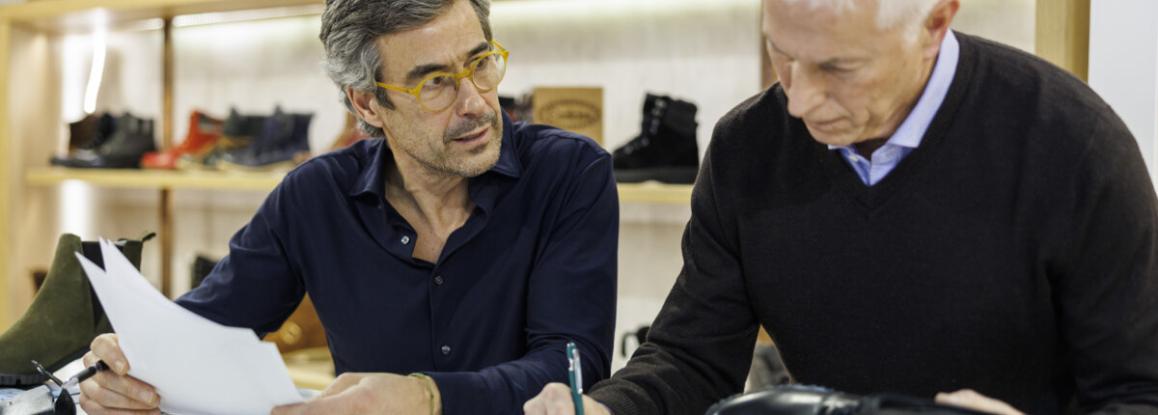What’s going on in Germany? What issues are occupying the DACH market?
On the occasion of Expo Riva Schuh & Gardabags, representatives of the retail trade and buying associations from Germany, Austria and Switzerland met for a roundtable discussion with shoe and trend expert Dr. Claudia Schulz.
Expo Riva Schuh & Gardabags, as the kick-off fair for every new order round, is also an important indicator of the current mood in the sector. How things are going in the DACH market and which topics are burning under the
nails of the industry were the questions Dr. Claudia Schulz explored in the discussion panel “Fashion & Trends – Market Focus Germany“. In addition, the international roundtable dealt with the fashion trends for autumn/winter
2023/24.
Many problems burden the industry: political and economic imponderables burden industry and trade alike. Cost pressure is immense. The inflation rate remains high. In addition, energy and rental costs have risen and the minimum wage
is driving up personnel costs. Truly not a relaxed scenario, against which interest in the new fashion often takes a back seat. The enthusiasm for new fashion and the decision to include new brands in the assortment is
difficult for many buyers, not least because of the lack of limits. In economically strained times, people prefer to rely on trusted suppliers. Safety first. Yet now would be the right moment to invest and stimulate consumers for new shoes
and fashion. But the situation is difficult. Retailers are very cautious and not really open to new concepts. Yet they urgently need to address the issue of productivity and innovation. It’s about concepts that appeal
to consumers twelve months a year and motivate them to buy, so the conclusion. Against the background of the cost explosion, higher average prices would be urgently needed to achieve the necessary return. But whether consumers are willing
to spend more money on new shoes in the already tense situation? Questionable. Once again, it seems that Germans are taking these problems particularly to heart. In Austria and Switzerland, people are much more optimistic about the new
season.
What about order blocks?
Once again, it’s the weather that has ended up boosting retailers’ spirits, at least in the short term. The cold, wintry days have fuelled sales of warm-lined boots, cleared the warehouses and (in the sale phase) flushed a little money into the coffers.
And how are the new collections being received? Function and comfort are one thing. Especially for men’s shoes, features like Tex membranes, removable footbeds and zippers are indispensable. In addition to the flood of
outdoor styles, chelsea boots, also in neater versions, are on the rise again. On the other side, industry and commerce confirm a clear trend towards more femininity and a more refined look. Loafers, pumps and
even ballerinas are rated well in the low shoe segment. Shine, glitter and glamour are appealing. Metallics (silver!) and patent are also back in the order.
In addition, clean ankle boots suitable for everyday wear are sought after. The sneaker is still present, but is in fashion retreat. Quilted, shiny metallic snow boots are by no means just a topic for the snow. And the slipper is becoming suitable
for going out as a fluffy version. Internationally, western boots are doing extremely well; Germany is still lagging behind. And the colours? “Black is back” – highly fashionable and thus anything but standard. So that the windows don’t get
too gloomy next autumn/winter, colour is needed. Violet and pink, above all the Pantone shade “Viva Magenta” could set fresh accents. Cognac and grey are coming. Green remains important as a symbol of freshness and confidence.
The shoe sector can really use both! The roundtable agrees on one thing: after a long phase full of caesuras, 2023 is still a year of uncertainty and risks, but also with many innovations and confidence.
Editing by Foto Shoe 30


